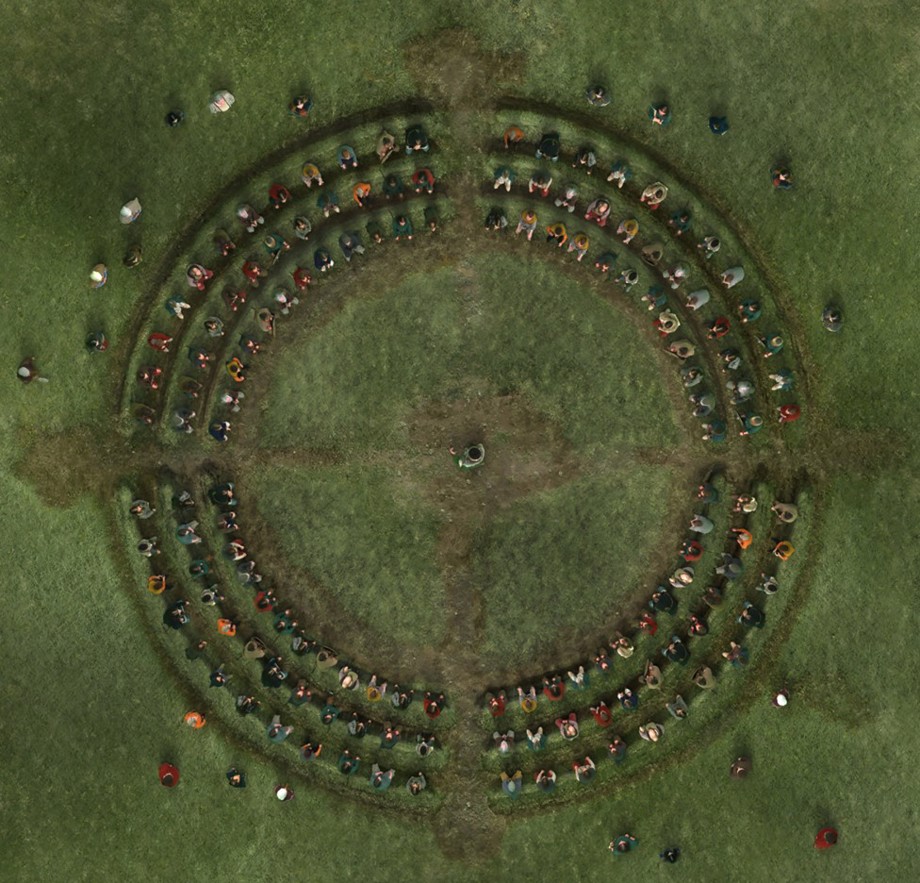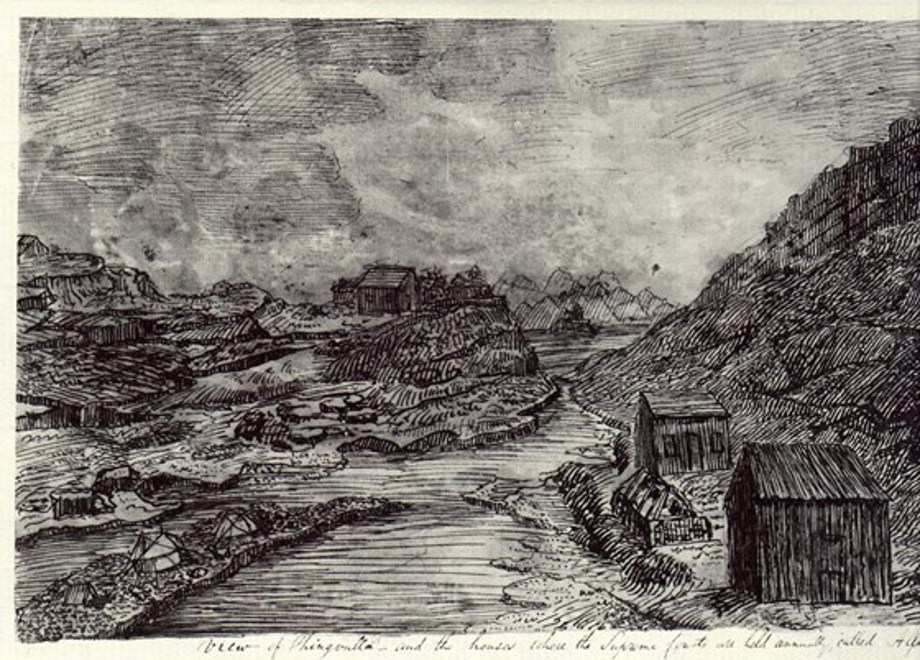Lögrétta - Law Council
Lögrétta was the legislative assembly and therefore the supreme institution of the Alþing in the Commonwealth period. The work of the Lögrétta was multifaceted as it settled disputes, passed new laws and granted exemption from laws.

Lögrétta (Law court) might have been in circle. Chieftians (goðar) in the middle and each and everyone with two assistants. From our exhibition Heart of nation.
Þingvellir National Park / Gagarín
The Law Speaker governed Lögrétta meetings,at which 48 chieftains sat on a central platform. Each chieftain had two advisors who sat in front and behind him.After the bishoprics at Hólar and Skálholt were established, the bishops also had seats at the Lögrétta. The number of men who sat at the Lögrétta was thus 146, or 147 if the Law Speaker wasn't a chieftain. The Lögrétta met on both Sundays included in the general assembly, as well as on its last day, and more often if the Law Speaker so desired. Everyone was free to follow the proceedings of the Lögrétta, but no one was allowed to stand within the terraced area.
As the 13th century proceeded, increased animosity between chieftain clans ended when Icelanders yielded to the authority of the Norwegian king in 1262 with Gamli Sáttmáli. This treaty made Lögberg redundant and the Lögrétta became the only entity of the Alþing, which then became a court of law with limited jurisdiction. At a gathering in 1662, the Lögrétta members agreed to acknowledge the absolute rule of the Danish king. At that point, the responsibility and power of the Alþing diminished until the last meeting at Þingvellir in 1798.

In the 18th century a house was built over Lögrétta. That house stood at Þingvellir until 1798.
Until the 16th century the Lögrétta was located on theeastern side of the Öxará river. In the 16th century, due to changes to the Öxará river, Lögrétta became isolated on a small islet and hence was moved west of the river in 1594, where a small building was constructed for it. All assembly proceedings took place in this building until 1798.